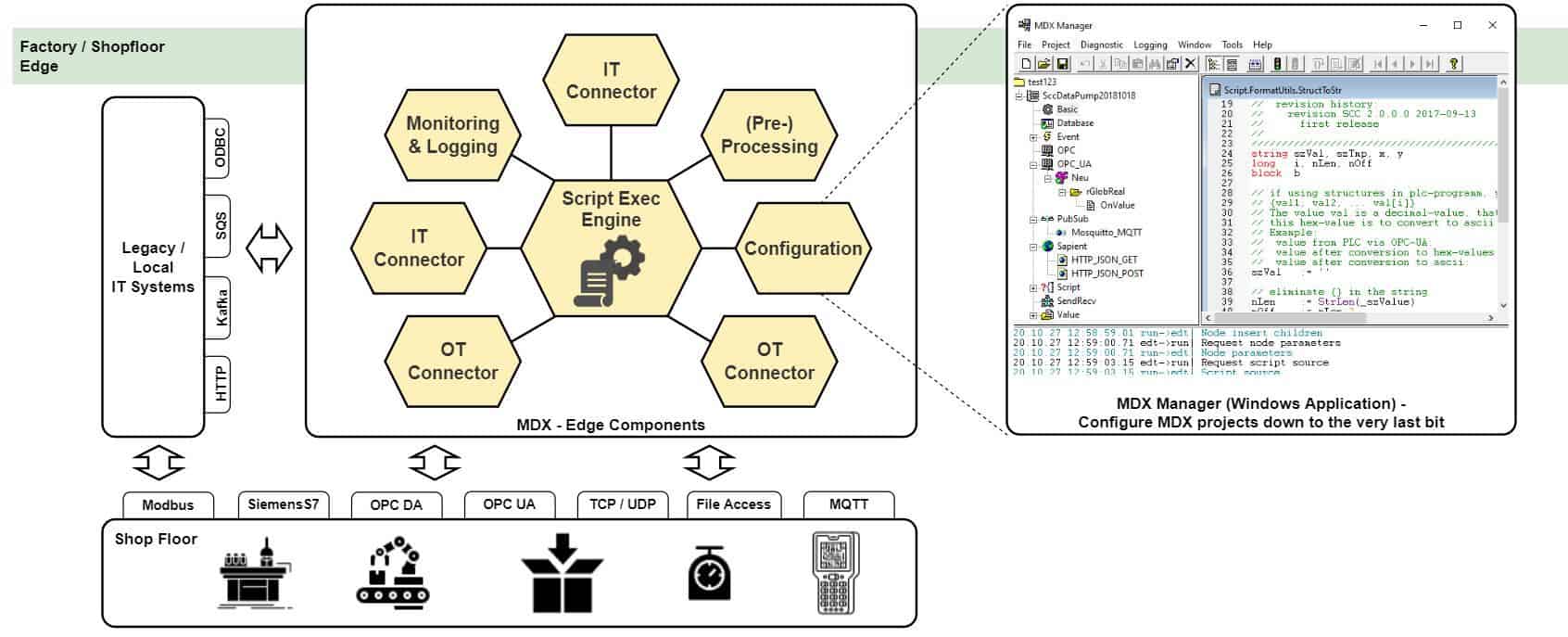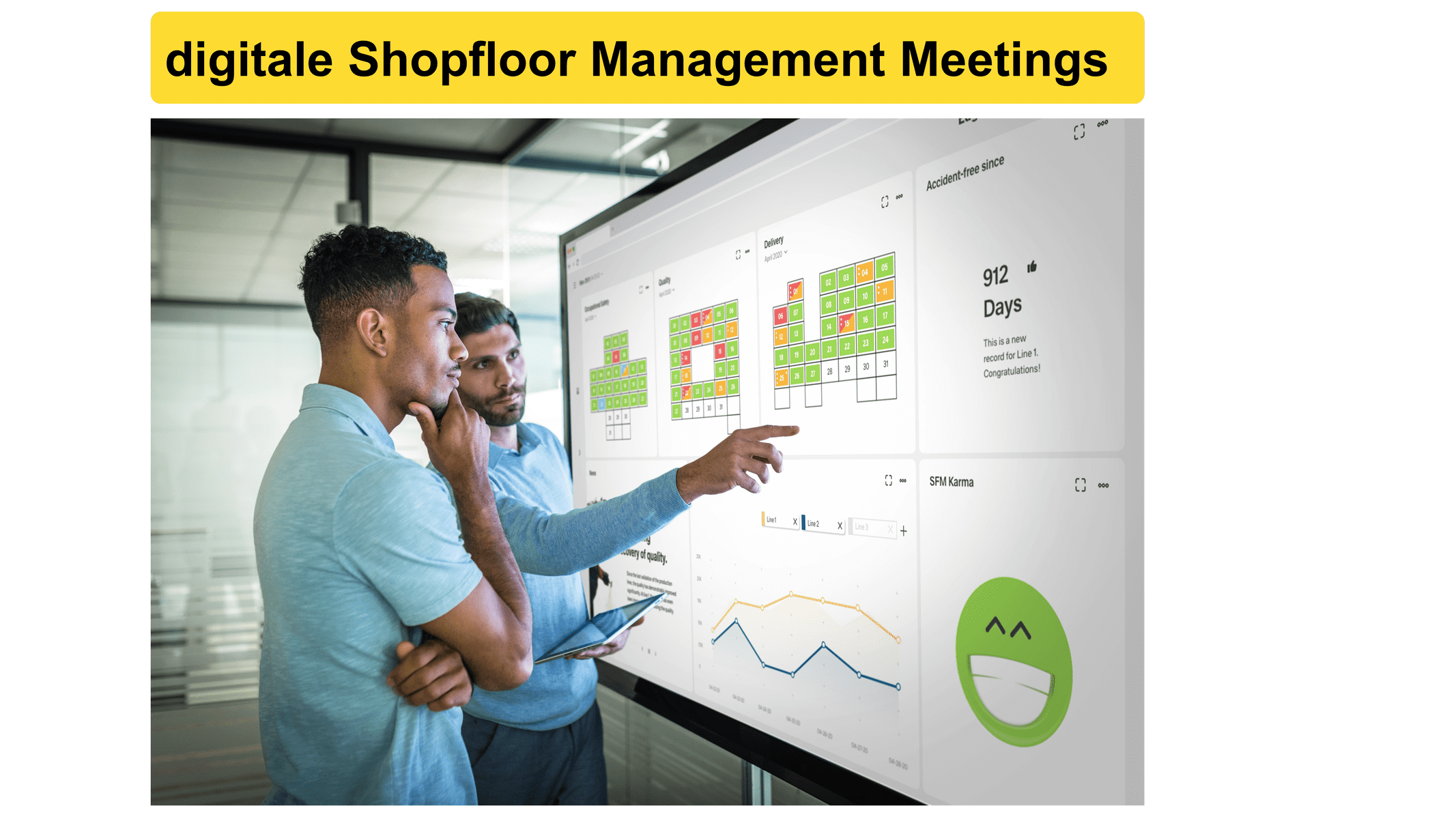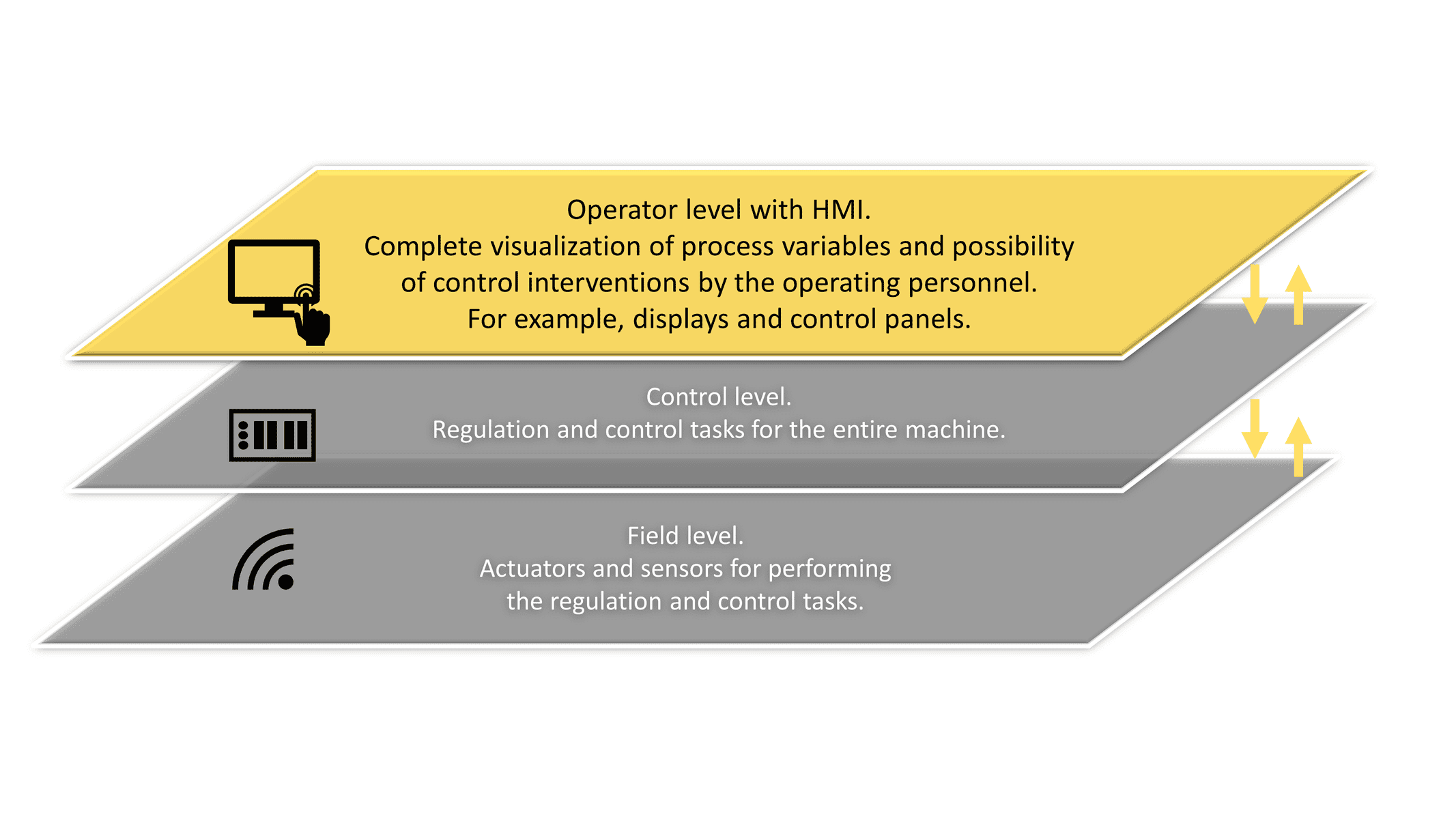The Smart Factory: The Actual Core of the Digital Factory of the Future
Increase transparency and efficiency of your production – by recording, visualizing and evaluating production-critical values in real time
Globally significant events change our usual economic frame of reference. Unstable markets with price fluctuations, supply bottlenecks, and much more are the results. In this difficult environment, the Smart Factory opens up new opportunities: It enables variant-rich, customer-specific, individualized production with distributed, heterogeneous or scarce resources. Thus, response times are significantly shorter in the digital factory of the future. At the same time, energy and material can be saved, setup times can be reduced, and the production of small batches is more cost-effective.
Connection between OT and IT: Holistic view of all levels
The comprehensive networking of all components with the people involved in production is a prerequisite for the emergence of the smart factory. Where data silos previously prevented the overarching use of data across functions and areas, there are no longer any system breaks in a digital factory. All components of a smart factory are embedded in a network for the transmission of digital data, through which not only people but also machines, plants and systems communicate with each other – i.e. those located at the Operational Technology (OT) level, i.e. where data is generated, and those systems located at the Information Technology (IT) level, i.e. where data is consumed.

Looking for a travel partner on your journey to the digital factory?
The completely self-organizing smart factory is a target image that is worth orienting oneself towards in order to sustainably strengthen the resistance and change capability of one’s own production. How? For example, through
- automatic online monitoring of real machine states,
- rapid response to malfunctions,
- automated alarm management,
- automatic calculation of machine-related KPIs,
- or interactive data analysis and digital maintenance plans.
But every journey starts from a different starting point and at an individual pace, and we accompany you on your own personal path to increasingly intelligent production.
What exactly are the drivers of a Smart Factory and what building blocks are needed?
MES and HMI: Connection between shopfloor and control level
The separation between the control system level (MES) and the HMI (Human Machine Interface) is still common practice, analogous to the classic automation pyramid. In the Smart Factory, however, the separation of the control level and the store floor level has been overcome – through the use of web technology at the plant terminals. The web-based HMIs can be seamlessly integrated into the control system, making all necessary information and control functions available in the central system in real time. The connection of a complete production line with more than 1000 machine controls is not uncommon.
In addition, an overview of all plant areas is easily possible from any station via web browser. This means that plant data from upstream and downstream areas is also available at a plant and can be used to optimize the production flow and the like. With web-based HMIs, the Smart Factory can reduce costs in terminal hardware, operation and maintenance / support.
 Data Analysis and Reporting: Generating Information and Knowledge from Data
Data Analysis and Reporting: Generating Information and Knowledge from Data
By integrating machine and process data from the store floor in the central MES, it is possible to present a uniform data picture of the overall situation at a glance. Every process step and every parameter is monitored, logged and analyzed in real time. The machine and production data collected across functions and departments is systematically evaluated and aggregated into meaningful key figures. This leads to significantly more transparency across the various levels of the organization. Decisions can be made on the basis of a well-founded overall situation. TopX evaluations of machine downtimes and their causes also reveal potential for improvement, which can be successively addressed.
Smart Factory improves the maturity level of an organization
This improves the individual maturity level of the organization, for example through time-optimized, precise, reproducible and transparent processes or cross-organizational collaboration. Optimized production also increases the quality of the end products, expensive recalls can be avoided – and cash is saved in the long term. In the future, employees will be relieved of routine tasks to an even greater extent than today. They can concentrate on the things that appeal to their intellect and creativity, and thus become more and more of a designer.
The morning round as a platform for dialog
The digitization of the morning round replaces the previous decentralized preparation of data in tools such as Excel, PowerPoint and paper. Since all information is already available digitally in the Smart Factory, the morning round can focus on dialog, discussing events and tasks. The employees do not all have to be on site, but can use digital tools such as Slack or Teams.

Cloud-based MES: flexible, scalable and reliable
The basis for the building blocks of the Digital Factory is the platform Edge.One. Through it, the operation of the extended MES in the cloud (as a Software as a Service solution) becomes possible. That changes the framework conditions in a smart factory on a basic level. Cloud-based SaaS solutions enable manufacturing companies to focus on manufacturing processes and keep internal efforts for the IT infrastructure as low as possible – with highest performance at the same time.
 Data Analysis and Reporting: Generating Information and Knowledge from Data
Data Analysis and Reporting: Generating Information and Knowledge from Data